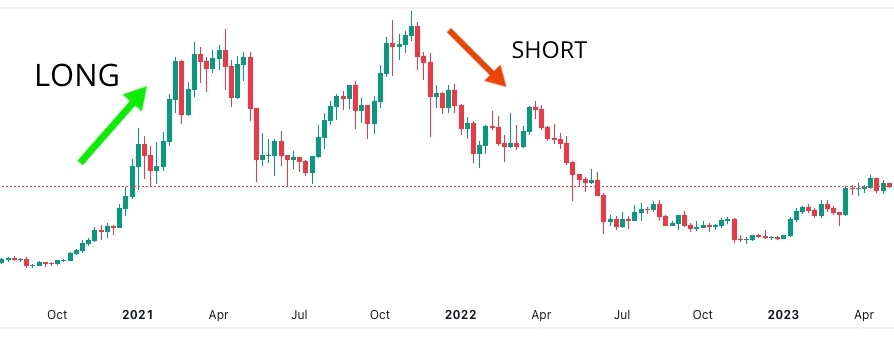Short position and long position in stock trading
Long position (long / long)
Let’s start studying long and short positions on the stock exchange by looking at the first definition. The term long position is directly translated from English as “long position”, but the shorter term - long is used in conversation. Such a deal implies buying a financial instrument in the hope that in the future its value will grow and it will be possible to get profit. Long is one of the most widespread positions, and it is with it that beginners in trading start their way. Long is able to stay open for as long as you want - a day, a month or a year.
It works simply:
- a trader opens a deal, buying shares of the selected company cheaply;
- waits for the stock to rise in price;
- sells the previously purchased asset, making a profit from the transaction.
Short position (short / short)
In English, the term short position literally means “short position”, but most often it is simply called “short”. A trader opens such a position in the expectation that the price of a financial instrument will decrease. Profit in this case is extracted from the market decline. Short is a rather complicated and risky position for beginners who are not always able to analyze market trends correctly.
The essence of this position is as follows:
- assuming that the shares of a particular company will soon fall in price, the trader borrows a certain amount of them from the broker (against collateral) and sells them quickly, taking advantage of the high price;
- the trader “freezes” the proceeds and waits for the stock price to fall;
- after the price drops, he buys the required number of shares and returns them to the broker, and pocket the difference minus the broker’s commission.

Short traders are called “bears”. They play on the downtrend, as if piling the whole “bearish” mass on the market.
A very important point: you should not confuse short and long positions. A short position is not selling shares from the investment portfolio. If a trader sells previously bought shares, he closes a long position